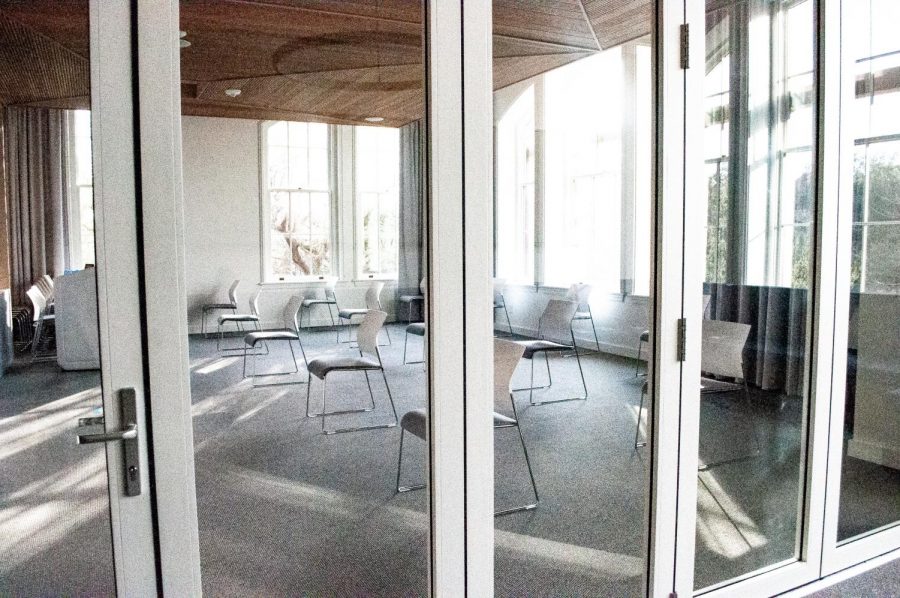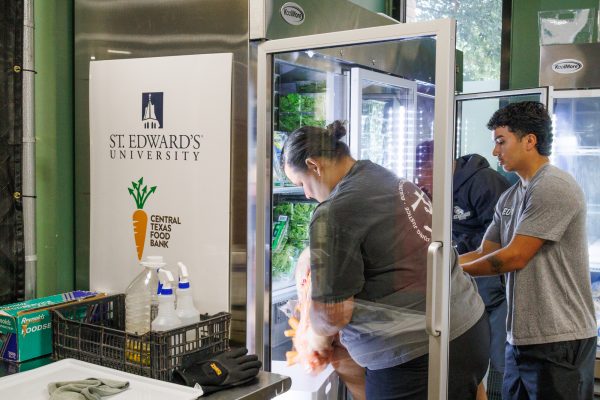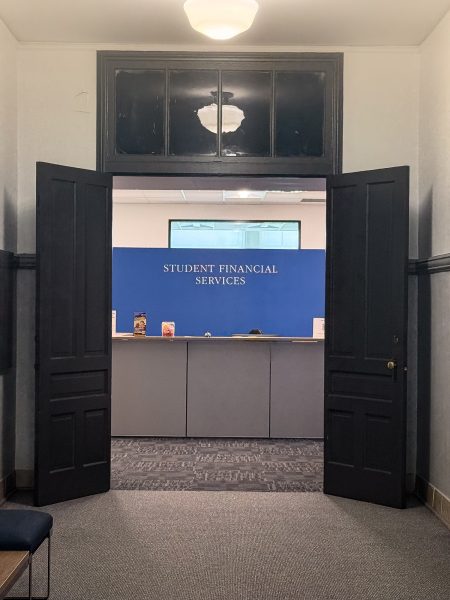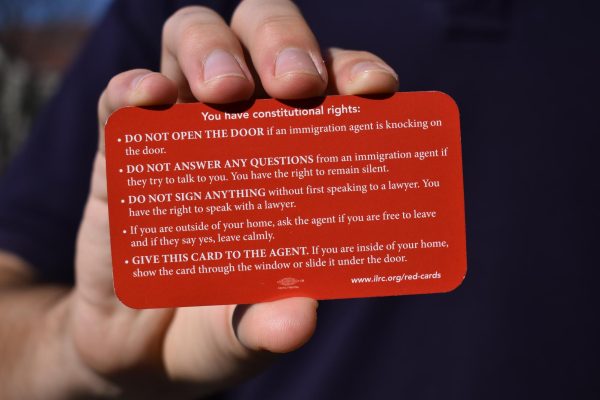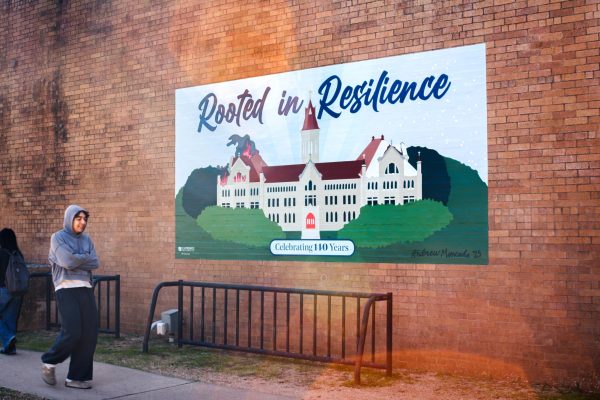St. Edward’s adjusts from all-remote classes to hybrid classrooms for upcoming fall semester to keep students safe
Classrooms, like this one in Main Building, will look a little different next semester as students return to in-person classes. While some classes remain online, others will meet in cohorts throughout the week and once online.
This last year affected everyone at St. Edward’s and drastically changed the way students attend classes. Classes were moved online, and students’ social interactions became vastly limited. However, with COVID-19 cases falling in Texas, there is hope that next semester will allow students on campus to return to some degree of normality.
St. Edward’s announced that a majority of classes will meet on campus in the fall, although they will have new social distancing and mask requirements. These classes will be either in-person full time or “hybrid,” meaning a blend between in-person classes and synchronous online classes.
“A blended course typically divides each class into two smaller groups who meet in-person on alternating days, while joining on Zoom on days in which they are not in-person” Provost Andrew Prall said. “However, there are different approaches to blended learning, and the faculty member will reach out to the class just prior to the start of the fall semester to provide additional information if a course is going to use a blended model.”
Prall expanded on the social distancing and mask requirements that will be implemented throughout campus this fall in an effort to keep the Hilltop safe.
“Current research shows that vaccinated individuals still pose a risk to others as asymptomatic COVID-19 carriers. The university is following CDC guidance, which recommends that vaccinated individuals continue to practice social distancing and wear face coverings when in shared spaces or outdoors unable to maintain social distancing.,” Prall said.
However, Prall emphasized that the decision to return to in-person learning has been made with extreme caution.
“The university continues to work with the CDC, Austin Public Health and our own medical advisory team to ensure the best available guidance is implemented on campus,” Prall said. “The university will continue to maintain a set of community standards grounded in this guidance face coverings, testing and screening, social distancing and healthy hygiene.”
The most controversial announcement is that St. Edward’s will require students and employees to get vaccinated. With debate arising over whether or not vaccines should be required by schools or workplaces, St. Edward’s made a decision that they believed would keep students and staff safe.
“The CDC data available today demonstrates the efficacy of the vaccines. They have been demonstrated to be the most effective way to lower transmission and reduce the risk of infections requiring hospitalization,” Prall said. “When Texas and 42 other states announced timelines to vaccinate the general adult population, the university believed it was important to move forward with the policy to provide faculty, staff and students’ time to schedule and receive their vaccinations.”
After Gov. Greg Abbott banned vaccine passports in Texas, St. Edward’s walked back their position, allowing students and professors to refuse to provide proof of their vaccination. In a statement released after Abbott’s executive order, St. Edward’s said that university policy “will not deny services to those submitting documentation for a qualifying exemption.”
Prall also acknowledged that the future looked hopeful, and the “new normal” at St. Edward’s will look closer to how it did before COVID-19. He emphasized that the community “is at its best when we can be on the Hilltop together.”
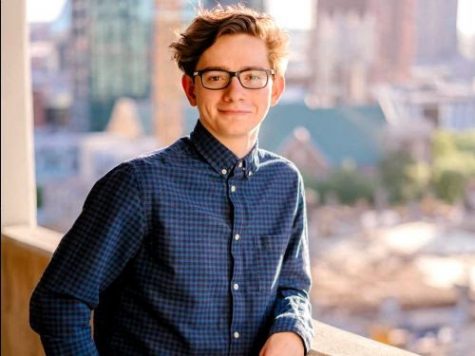
My name is Milo Cortese, and I am a double major in American History and Political Science. I am a senior graduating in the Spring 2022 and plan to...


